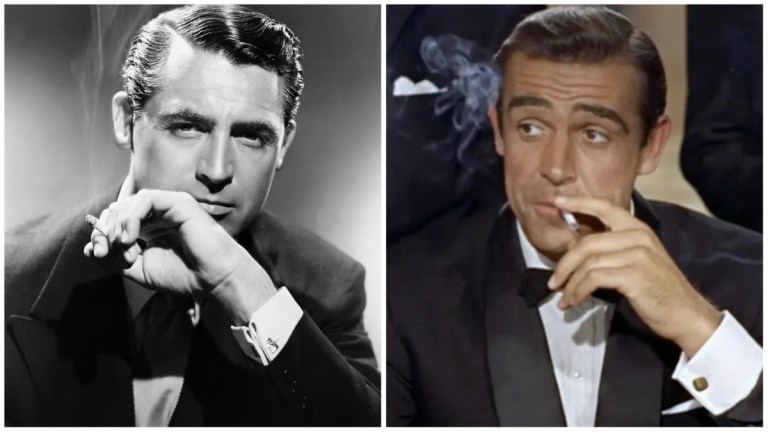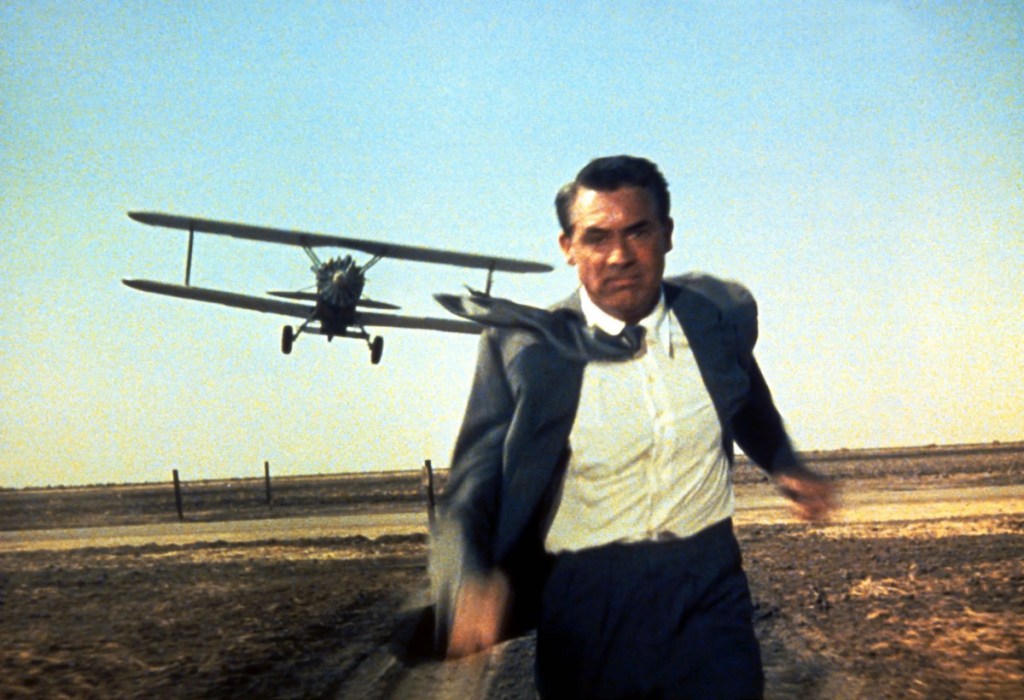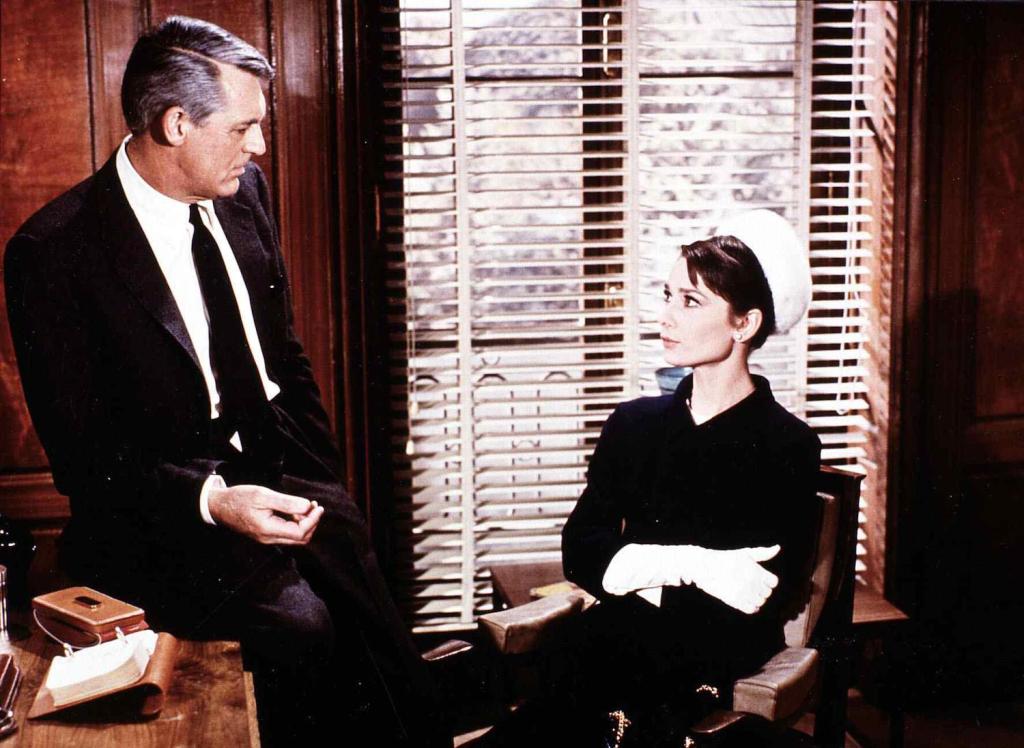How Cary Grant Almost Changed the James Bond Character Forever
If the producers had their way, the cinematic James Bond might have been very different with Cary Grant in the lead role.

Cary Grant was James Bond before James Bond. Sixty years since the release of Dr. No and Sean Connery’s era-defining performance as 007, it sounds crazy that Grant almost beat him to the role, but as late as 1962 it made perfect sense—including to the men who produced the James Bond movies. As the Hollywood leading man who perfected the Hollywood ideal of debonair sophistication and unflappable suaveness, Grant was a class act that couldn’t be beaten, and for the better part of 30 years all of Hollywood agreed.
This included one of the two godfathers of the James Bond franchise and Eon Productions, Albert “Cubby” Broccoli. Along with his partner Harry Saltzman, Broccoli saw the long-term viability of the James Bond character as a genre unto himself. Broccoli also wasn’t a delusional producer who just wanted to cast one of the biggest stars of his heyday as 007—he was also intimately close to Grant. So much so that in 1959, two years before Broccoli went into the James Bond business, Grant acted as best man at Broccoli’s wedding.
Ergo, when it came time to cast an international man of mystery who enjoyed the finer things in life, Broccoli had only one name in mind: Cary Grant. And you know what? You can still see it.

Why Cary Grant Made Sense as James Bond
Born Archibald Alec Leach in turn of the 20th century England, Grant became one of the most popular movie stars that the United States ever knew. A defining practitioner of the mid-Atlantic accent, Grant’s viability on the big screen had as much and more to do with his versatility as a performer. With a devastatingly effective sense of comic timing, Grant could be droll, as seen in The Philadelphia Story (1940), or madcap goofy, as seen in the many, many screwball comedies he anchored and helped create a subgenre out of, including Bringing Up Baby (1938), His Girl Friday (1940), and Arsenic and Old Lace (1944).
However, Grant also could transition effortlessly to action-adventure movies and dramas, including Gunga Din (1939), Destination Tokyo (1943), and Notorious (1946). The latter is of special note while regarding his Bond pedigree since it was a thriller directed by Alfred Hitchcock and the second of four movies the star and auteur made together. As always, Hitch was attracted to Grant’s box office-friendly charisma as well his seemingly preternatural ability to conjure an unshakable coolness. And in Notorious, Hitch cast Grant as a spy; one who seduces and then falls in love with an asset (Ingrid Bergman), whom he still sends into the lion’s den in order to root out Nazis hiding in South America (a general plotline that Mission: Impossible II would more or less steal to worse effect 55 years later).
But it’s really the movies Grant and Hitchcock made after Notorious that laid the groundwork for what would become the James Bond franchise and all other mainstream espionage thrillers. The first was To Catch a Thief (1955), which is also a forerunner for the modern, smirking heist genre. In the film, Grant plays a retired cat burglar extraordinaire who spends his days living the good life at high-end casinos along the French Riviera. Living in a world of baccarat and martinis, cigarettes and sex, and an existence where cocktail hour always demands a tuxedo, Grant epitomized in this film the kind of lifestyle that author Ian Fleming was also glamorizing for readers around the same time in the novel Casino Royale (1953).
That film presented audiences with what was obviously Hitchcock’s not-so-platonic ideal of the “cool blonde,” with Grace Kelly as a thief of her own who catches Grant’s eye and attempts a cat-and-mouse game of flirtation and manipulation between fast drives in the country and perpetual evening gown attire. And in retrospect, Kelly also was something of a proto-Bond Girl in that movie (although one with far more agency and interiority than early roles for women in the Bond franchise).
Meanwhile Grant’s next movie with Hitch, North by Northwest (1959), is generally credited as being the first modern action movie. It certainly was the first of its kind with an actual rotating series of locales that the Hollywood filmmakers actually visited and filmed at: New York City, Chicago, the rural plains of Indiana, and even the top of Mount Rushmore for a cliffhanging climax.
While the movie was not quite a globetrotting adventure, it was certainly a continental one in which Grant’s character is mistaken for being an international man of mystery by a nefarious criminal syndicate. In point of fact, he’s a fairly mild mannered divorcée named Roger! Nevertheless, he rises to the occasion, particularly after meeting his own blonde femme fatale on a fateful train sequence (Eva Marie Saint). It’s a scene that Bond movies still emulate, too, a la how Daniel Craig met Vesper Lynd in the movie version of Casino Royale (2006).
When it came to the big screen image of a dashing English adventurer who gets wrapped up into spy games and escapades, and who always has a dry joke on his lips, Grant was that guy.
So Why Didn’t Cary Grant Play James Bond?
The truth is it depends who you ask. There have been conflicting accounts since 1961 as to whether Broccoli really approached his movie star pal or simply seriously weighed it and got cold feet. But given the discrepancy in stories between whether Grant agreed to star in one or two James Bond movies, it would seem that Grant was approached through unofficial channels.
In the Inside Dr. No Documentary, about the making of the first James Bond picture, Broccoli’s third wife Dana Natol, who saw Grant in her wedding party, recalled her husband reaching out to Grant, however the actor would only agree to play Bond for one movie.
This was true to form for Grant, especially at that point in his career, and since Broccoli and Saltzman were determined to launch a series of films, they were looking for at least a three-film commitment from Grant, as per James Bond: The Legacy by John Cork and Bruce Scivally.
So the search continued, and Grant never took the role he seemed born to play.

What Would James Bond Look Like Today If He Were Played by Cary Grant?
It’s always interesting to ponder the roads not taken. So much of the cinematic James Bond character as we know him comes down from Connery’s then youthful vitality and fairly brutal charisma, as well as how that energy was then shaped and presented by the director of three of the first four Bond movies, Terrence Young. Many folks to this day credit Young as a kind of Svengali, who modeled Connery’s Bond after his own Savile Row tastes.
Grant wouldn’t have needed (or wanted) that kind of influence. My guess is Grant’s Bond would be much more in line with the vast majority of Grant’s big screen heroes: sharp, erudite, and a decent guy with a joke. In other words, he wouldn’t be the irresistible bastard that Connery popularized. In some ways, he would’ve been a lot closer to how Roger Moore reinterpreted the character in the 1970s, however even then Moore’s version was a gradual reaction to Connery’s, with Moore always appearing somewhat uncomfortable with the degree of viciousness and a kind of sneering misogyny the role sometimes demanded (at least back then).
And even in that regard, we have trouble imagining Grant would have allowed Bond to be as openly defined by chauvinism. Grant liked his leading ladies to be partners, and by the early ‘60s, he wanted them to even take the lead in the double entendre repartee.
Indeed, the most telling window into what Grant’s Bond would’ve been like in 1962 is the movie he made one year later, 1963’s Charade. Directed by Stanley Donen and sometimes credited by its admirers, including Steven Spielberg, as the best Hitchcock thriller that Hitch never made, Charade is a strange hybrid of comedy, drama, and suspense (hallmarks of later Bond movies) in which a decidedly older Grant plays a man who introduces himself as Peter Joshua—a mysterious international figure who keeps running into the recent and wealthy widow Regina Lampert (Audrey Hepburn). Whether it’s in the French Alps where she discovers her estranged husband has died, or on the streets of Paris where she discovers it was murder and a conspiracy is afoot, Peter Joshua is suspiciously always there.
The romance between Grant and Hepburn in the movie also reversed typical Hollywood trends, and certainly the emerging ones of the 007 franchise, with Hepburn’s Regina eagerly pursuing Grant’s charming suspect, and even trying to get him back to her hotel room. This was done at the request of Grant, who felt that at the age of 59, it had become unseemly for him to be seen pursuing and dropping pick up lines on much younger women.
But dropping lines is something Bond never tired of, even when played by a 58-year-old, as occurred when Moore portrayed 007 for a seventh time in A View to a Kill (1985). Then again, by that point it was expected for the character given the road map left by Fleming, yes, but much more forcefully by Connery and then Moore’s own early years with the part (Moore was 46 in his first Bond outing, 1973’s Live and Let Die).
So it’s an interesting thought experiment to consider what would’ve happened if Grant had taken the role. Perhaps he might’ve changed the trajectory of our idea of 007—or perhaps he would’ve ended it. If Grant had played Bond, it would’ve been a Cary Grant vehicle, as opposed to a vehicle for the character as how Broccoli and Saltzman saw him. In the end, it was probably best to just say no to Dr. No.
